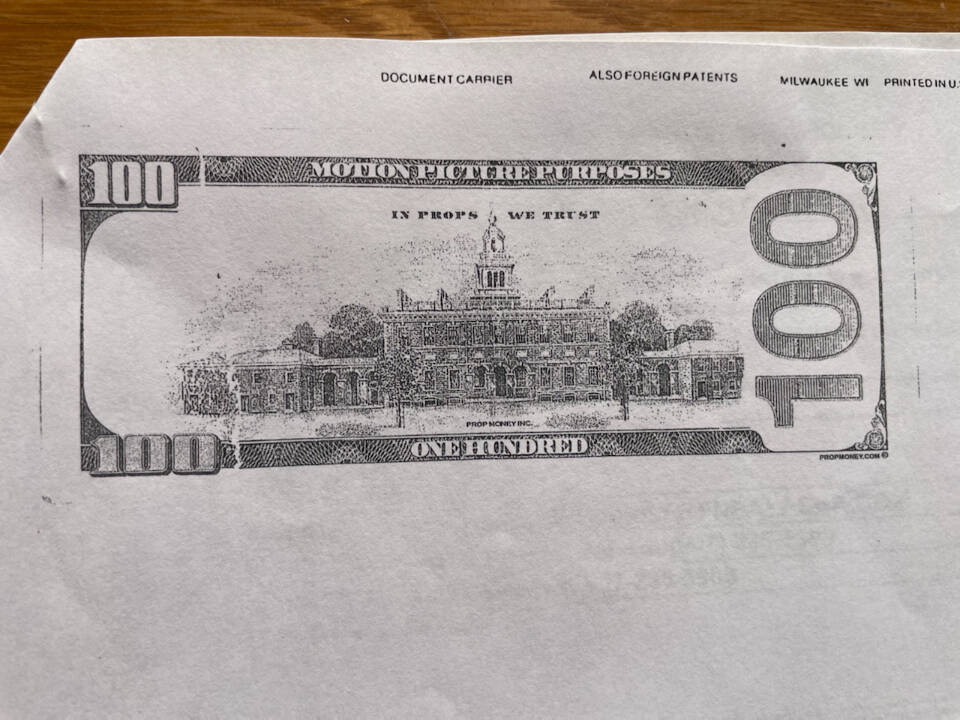Last Thursday, Homer’s First National Bank received an attempted deposit of a counterfeit $100 bill. The bill was a motion picture photos cash dollar.
Erik Neibuhr, Homer branch manager and loan officer, confirmed the event and said that when this occurs it’s usually in a large deposit from businesses such as the grocery stores, gas stations or fast food restaurants. Bank staff are trained to feel the texture of legitimate cash. U.S. currency is printed on fabric, a combination of linen and cotton and not actual paper. It also contains a slight color distribution of blue and red within the green and black visual pattern to make imitation more difficult.
According to Neibuhr, when a bank receives counterfeit currency, the business is required to report the event to the United States Secret Service and the currency is collected by local law enforcement.
There are only three banking institutions in the community of Homer: Wells Fargo, Global Credit Union and First National. Neibuhr said that if deposit attempts occur more than once local police will often put out a notice to local merchants to be aware of the situation.
He said that it is typical for businesses to use a counterfeit test pen when they receive a customer payment of $50 or $100 bills. A counterfeit pen marks a bill to see if it changes color to confirm legitimacy and it is common for merchants to keep a pen in their cash register to test bills.
Neibuhr said that once a counterfeit bill is received at a bank it’s unlikely that it can be traced back to the person who used it in retail because the fake money has been handled by so many people before the attempted deposit.
He also said an event like this is a good reminder for retail businesses to inform their staff to be aware of the possibility of the reception counterfeit cash and to check large bills before accepting and processing them.



